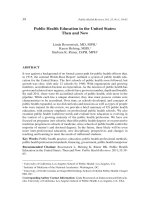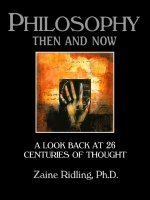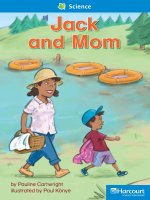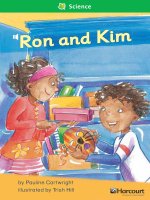3 1 1 schools then and now (social studies)
Bạn đang xem bản rút gọn của tài liệu. Xem và tải ngay bản đầy đủ của tài liệu tại đây (2.35 MB, 14 trang )
H O UG H T O N MIF F L IN
by Stephanie Cohen
PHOTOGRAPHY CREDITS: Cover ©1995-2007 Denver Public Library, Colorado Historical Society, and Denver Art Museum.
1 © Artville. 2 #S372-67 Nebraska State Historical Society. (frame) C Squared Studios. (bkdg) © Shutterstock. 3 Nebraska
State Historical Society. 4 ©1995-2007 Denver Public Library, Colorado Historical Society, and Denver Art Museum. (frame)
C Squared Studios. 5 (b) Fred Hulstrand History In Pictures Collection, NDIRS-NDSU, Fargo, North Dakota. (parchment)
© Shutterstock. 6 © Artville. 7 ©1995-2007 Denver Public Library, Colorado Historical Society, and Denver Art Museum.
(frame) C Squared Studios. (bkgd) © Shutterstock. 8 The Granger Collection, New York. 9 Fred Hulstrand History In Pictures
Collection, NDIRS-NDSU, Fargo, North Dakota. (parchment) © Shutterstock. 10 Joseph Sohm/Visions of America/Corbis.
Copyright © by Houghton Mifflin Harcourt Publishing Company
All rights reserved. No part of this work may be reproduced or transmitted in any form or by any means, electronic or
mechanical, including photocopying or recording, or by any information storage and retrieval system, without the prior
written permission of the copyright owner unless such copying is expressly permitted by federal copyright law. Requests
for permission to make copies of any part of the work should be addressed to Houghton Mifflin Harcourt School Publishers,
Attn: Permissions, 6277 Sea Harbor Drive, Orlando, Florida 32887-6777.
Printed in China
ISBN-13: 978-0-547-02123-2
ISBN-10: 0-547-02123-2
1 2 3 4 5 6 7 8 0940 18 17 16 15 14 13 12 11
If you have received these materials as examination copies free of charge, Houghton Mifflin Harcourt School Publishers
retains title to the materials and they may not be resold. Resale of examination copies is strictly prohibited.
Possession of this publication in print format does not entitle users to convert this publication, or any portion of it, into
electronic format.
Going to School in the 1800s
Imagine what school was like for
children in the 1800s. School was just
one room. There was only one teacher.
Children of all ages learned together.
Your school probably has many
classrooms and teachers. All of the
children in your class are probably about
the same age. And you certainly don’t
have to walk more than three miles to
get to school today. But pioneer children
often did.
The one-room
schoolhouse was
often also used
as a church and
a place for town
meetings.
2
Welcome to the Schoolhouse
American pioneers began to move
west during the 1800s. The first schools
were built out of blocks of grass stacked
like bricks. Some schools were built
from logs. Some were built into the
side of a hill, like a dugout.
Children shared benches and desks.
Usually, there was a large chalkboard
at the front of the room. The teacher
wrote out the lessons.
Teachers
were often
teenagers.
3
Where’s the Bathroom?
In the winter, a stove heated the
schoolhouse. When temperatures
soared, there was no air conditioner.
The schoolhouse had no water fountains
or bathrooms. There was just one bucket
of water for drinking and another for
washing. The outhouse, or bathroom,
was in a little hut outside the school.
In the 1800s,
children had
to get wood
for the stove.
4
The Road to School
Many pioneer children walked to and
from school, even if they lived miles
away and even when the weather was
bad. Some lucky children rode a horse
to school.
If you live more than a mile from
your school, you probably take a car or
a bus. If you live closer, maybe you’ve
strolled to school a few times. But only
if it’s a nice day!
Children rode horses and traveled
in buggies to get to school.
5
Meet the Teacher
Pioneer teachers worked very hard,
even before they announced the start of
school each morning. They filled the
stove with coal, cleaned the chimney,
and filled the water buckets.
Students ranged from
4 to 18 years old. Many fine
teachers were just teenagers
themselves. If you finished
eighth grade and behaved
properly, you could become
a pioneer teacher.
Some teachers rang a bell in
a bell tower to begin the day.
Others rang a hand bell.
6
Children often read aloud from the same story.
Time to Learn
Pioneer children went to school to
learn the three R’s: reading, ‘riting, and
‘rithmetic. Students practiced spelling
and math problems using slates and
chalk. They didn’t use paper, pencils, or
computers, like you do.
7
Students spent a lot of their time
reading a book called McGuffey’s
Reader. It was usually one of the only
books a student had. There was no
library in a one-room schoolhouse.
McGuffeys’s was filled with facts,
speeches, poems, and essays. Students
were proud to learn pages from
McGuffey’s and recite them to the class.
Students didn’t
move up to a
new grade every
year. When
they were ready,
children just
moved up to the
next McGuffey’s
Reader.
8
Time to Play
Pioneer children had one thing in
common with you. They had recess.
They played games like marbles, hide
and seek, hopscotch, and jump rope. In
winter, they built snowmen and threw
snowballs, just like some of you do.
Children enjoyed recess
more than 150 years ago.
9
One-room schoolhouses are often called
little red schoolhouses.
Times Have Changed
A one-room schoolhouse was very
different from your school. Can you
imagine school with no computers? No
cafeteria? No school bus? Well, at least
no one worried about missing the bus.
There wasn’t even a principal.
Students just had their teacher, one
room, and a bunch of desks. But they
learned something new every day.
10
Responding
Word Builder
Make a word web around the word “fine.’’
Which words mean the same thing as fine?
Copy this word web and add more words.
TARGET VOCABULARY
good
fine
Write About It
Text to Self Write a short paragraph about
something that’s fine about your school.
Tell why you feel this way. Use some of the
words from the web in your writing.
11
TARGET VOCABULARY
announced
fine
proud
strolled
certainly
principal
soared
worried
Summarize Tell the
important parts of the text in your own words.
TARGET STRATEGY
I sound like something a knight uses in
a fight.
12
Level: N
DRA: 30
Social Studies
Strategy:
Summarize
Word Count: 622
3.1.1 Build Vocabulary
HOUGHTON MIFFLIN
Online Leveled Books
ISBN-13: 978-0-547-02123-2
ISBN-10: 0-547-02123-2
1031998









